Long-read RNA sequencing for drug development
From therapeutic RNA characterization to epigenetic profiling and transcript analysis, Oxford Nanopore technology delivers unbiased, high-resolution data to support drug development
Unbiased RNA characterization across the therapeutic pipeline
RNA therapeutics
Long-read sequencing enables accurate and unbiased analysis of RNA identity, integrity, poly(A)-tail length, and length distribution, as well as detection and confirmation of RNA base modifications. Oxford Nanopore sequencing reads RNA directly, eliminating the need for cDNA conversion, a step that can introduce bias and erase critical information on base modifications.
Epigenetics and methylation analysis
Oxford Nanopore technology retains RNA modifications and reads them directly, alongside nucleotide sequences, eliminating the need for bisulfite treatment or enzymatic conversion. Long-read sequencing enables comprehensive detection of RNA base modifications at single-nucleotide resolution.
Transcript profiling
Oxford Nanopore’s long-read sequencing captures full-length transcripts, splice variants, and fusion events, delivering detailed transcriptome characterization through a PCR-free, primer-independent method that resolves repetitive regions, enables de novo sequencing, and retains modification data critical to RNA expression and stability.
Regulatory-supportive workflows
All assays are carried out in a regulatory-compliant laboratory environment, with strict procedures for sample handling, backup systems, and data security. While Oxford Nanopore’s long-read sequencing is not performed under GLP/GCLP, our regulated setting benefits every analysis by ensuring traceability, robustness, and reliable results.
GLP and GCLP compliant laboratory
We are accredited for Good Laboratory Practice (GLP) by the Swedish Board for Accreditation and Conformity Assessment (SWEDAC) for qPCR, dPCR, and molecular biology. In addition, we are Good Clinical Laboratory Practice (GCLP) compliant to ensure the safe and reliable analysis of clinical samples.


Oxford Nanopore RNA sequencing is a long-read sequencing technology that enables direct analysis of full-length RNA molecules. Unlike short-read NGS, which sequences fragmented cDNA and then reconstructs transcripts computationally, Nanopore reads span entire transcripts in a single pass. Long-read sequencing makes it possible to detect isoforms, alternative splicing events, and RNA modifications with higher resolution.
Short-read NGS, by contrast, provides high-throughput, cost-efficient, and highly accurate sequencing of RNA fragments, making it ideal for quantitative expression profiling and applications where large sample numbers are required. Nanopore sequencing offers complementary strengths, providing richer structural and qualitative insights into RNA, while short-read sequencing excels in depth, accuracy, and scalability.


